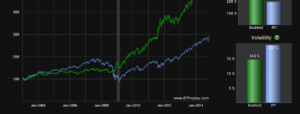Peer-to-peer lending refers to an economic transaction in which individual investors lend directly to individual borrowers using online platforms. Yuliya Demyanyk, Elena Loutskina, and Daniel Kolliner illuminate the darker side of such arrangements in “Three Myths about Peer-to-Peer Loans,” written as an “Economic Commentary” for the Federal Reserve Bank of Cleveland (November 9, 2017). Their more detailed research paper on the topic is available here. In the “Economic Commentary” piece, the summarize this way:
“Peer-to-peer (P2P) lending came to the United States in 2006, when individual investors began lending directly to individual borrowers via online platforms. In the decade since, the industry has grown dramatically …Online lenders and policymakers have suggested that the P2P market offers unique benefits to consumers. Three benefits are often repeated and seem to have become widely accepted. First, P2P loans allow consumers to refinance expensive credit card debt. Second, P2P loans can help customers build their credit history and improve their credit scores. Finally, P2P proponents claim that P2P lending extends access to credit to those who are underserved by traditional banks.
“But signs of problems in the P2P market are appearing. Defaults on P2P loans have been increasing at an alarming rate …We exploit a comprehensive set of credit bureau data to examine P2P borrowers, their credit behavior, and their credit scores. We find that, on average, borrowers do not use P2P loans to refinance preexisting loans, credit scores actually go down for years after P2P borrowing, and P2P loans do not go to the markets underserved by the traditional banking system. Overall, P2P loans resemble predatory loans in terms of the segment of the consumer market they serve and their impact on consumers’ finances. Given that P2P lenders are not regulated or supervised for antipredatory laws, lawmakers and regulators may need to revisit their position on online lending marketplaces.”













Leave A Comment